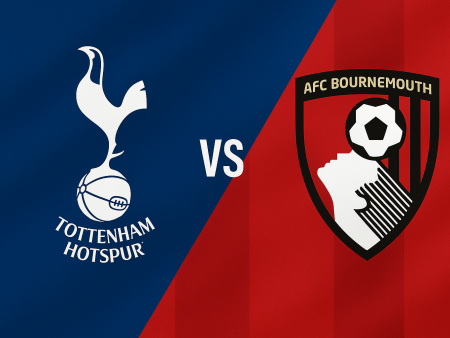Mastering the Art of Scanning: How BOTS Enhances Decision Making in Football
In football and other invasion sports, exceptional players are set apart by their ability to assess and react quickly to their surroundings. A core method for improving this is the BOTS system—a structured, purposeful scanning process that focuses on the Ball, Opposition, Teammates, and Space. This article delves into the practical application and value of BOTS, exploring how players and coaches can leverage it to gain a competitive edge.
Understanding BOTS: The Foundations of On-Field Awareness
BOTS is an acronym representing the four primary elements every player must constantly evaluate:
– Ball: The position and movement of the ball
– Opposition: The location and intent of opposing players
– Teammates: Awareness of teammates’ locations and potential passes
– Space: Open areas on the field that can be exploited
Unlike static features like the goal, these elements are in continuous flux, demanding ongoing attention and assessment. Whether in football, hockey, basketball, or similar sports, BOTS provides a blueprint for reading the game rapidly and accurately.
The Role of Scanning in Fast and Accurate Decision Making
Elite players are not simply more skillful; they possess the capacity to make faster and more accurate decisions under pressure. Research shows that top-level athletes consistently scan their environments for unmarked teammates, emerging threats, and available passing channels more effectively than their less-experienced peers.
Scanning is not a box-ticking exercise. It involves purposeful eye and head movements, both towards and away from the ball, to collect vital information that guides the next action. Developing this skill allows players to interpret dynamic game scenarios in real time and respond with the right choices.
Automatisms: Building Intuitive Reactions Through Coaching
Coaches play a crucial part in embedding scanning habits and BOTS-focused decision making in their players. By designing drills and match scenarios that reinforce the perception-action link, coaches can help players turn conscious efforts into “automatisms,” or instinctive responses. These behaviors allow players to process complex situations and react quickly and confidently, rather than hesitating or making errors under pressure.
Scanning Techniques: Beyond “Checking the Shoulder”
While common advice such as “check your shoulder” is helpful, scanning must extend much further. Players should develop 360-degree situational awareness, using their eyes and neck to gather a complete picture of the field, not just during ball receipt but at all moments. Avoiding tunnel vision—such as fixating solely on the ball—ensures players do not miss crucial cues from opposition or teammates.
Scanning in the Defensive Phase: Anticipation and Adjustment
Defensive scanning places emphasis on reading the game away from the ball and anticipating threats. Top defensive midfielders like Declan Rice and Moisés Caicedo excel thanks to their acute awareness of opponents’ movements and their ability to react instantly.
Key defensive scanning habits include:
– Monitoring immediate threats on either side
– Assessing passing lanes and preparing to intercept
– Remaining vigilant during transitions from attack to defense
– Avoiding “ball watching” when quick adjustment is needed
– Deciding when to press, hold position, or block a passing option
For example, when a team loses possession, it’s easy to fixate on the player with the ball. However, effective defenders scan behind them, adjusting to runners exploiting open space.
Scanning in Attack: Creating Options and Exploiting Space
On the attacking side, the scanning process helps players identify the best course of action—whether to pass, dribble, shoot, or move to create space for teammates. Being aware of both nearby teammates and arriving defenders is crucial to unlocking defenses and maintaining possession.
Effective attacking scanning strategies:
– Evaluating space to receive or exploit behind the defense
– Timing runs in response to teammates’ positioning and ball movement
– Balancing proximity—sometimes moving closer to offer support, other times pulling away to stretch defenders
– Assessing when to pause play (“La Pausa”) to attract pressure, before releasing the ball
Players like İlkay Gündoğan and Andreas Pereira exemplify this approach, repeatedly scanning for options and adjusting their movements, which makes their decision making swift and fluid.
Real-Time Scanning Examples: From Theory to Practice
Consider these illustrative scenarios:
| Phase | What to Scan | How This Informs Decision |
|---|---|---|
| Defense (Transition) | Opposition runners, ball carrier’s gaze, open spaces | Prepares to track runs and block passing lanes instead of solely pressing the ball |
| Attack (On the ball) | Teammates’ positions, defensive line gaps, support options | Enables quick passes or forward movements without hesitation |
| Midfield (Possession) | Shift in opposition’s shape, spaces between lines | Supports transition play and maintains ball circulation |
Tips for Coaches & Players to Elevate Game Awareness
To implement BOTS-based scanning effectively:
– Encourage constant head and eye movement, before and after every action
– Use training scenarios that replicate real match pressures and require rapid perception-action
– Promote reflection after games—reviewing where scanning led to better decisions or missed opportunities
– Teach players not just what to scan, but how to prioritize rapidly changing cues
Conclusion: From Scanning to Smart Decision Making
The ability to scan effectively is a cornerstone of top-level football performance. By mastering the BOTS system and integrating these habits into every moment of play—both in training and matches—players enhance their tactical intelligence and responsiveness. Coaches who foster this mindset will see their teams make sharper, more instinctive decisions, ultimately raising their competitive standard.
To further explore tactical IQ and practical strategies for player development, consider reaching out to leading coaching resources or pursuing specialized training programs dedicated to decision making and game awareness.
Staying curious, practicing purposeful scanning, and striving to see the whole field will set aspiring footballers apart as they pursue excellence in the game.








